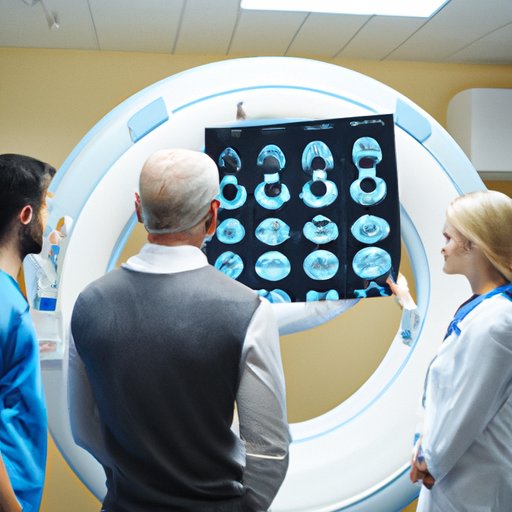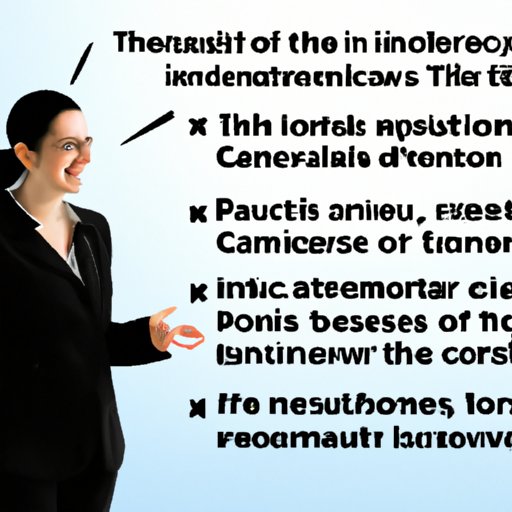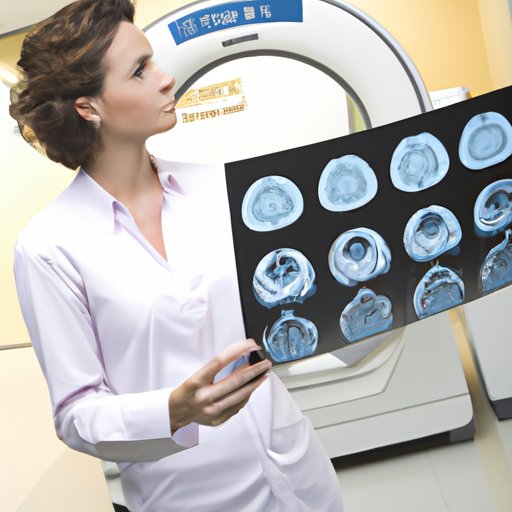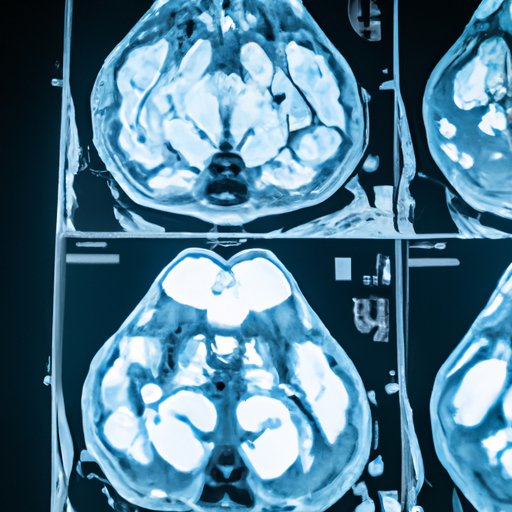
Explaining the Basics of a CT Scan
A CT scan, also known as a computed tomography scan or CAT scan, is a type of imaging test that produces detailed pictures of the inside of the body. It can be used to diagnose a wide range of conditions, from cancer to heart disease. Here we take a closer look at what a CT scan is and how it works.
Definition of a CT Scan
A CT scan is a medical imaging technique that uses X-rays and computer technology to create detailed cross-sectional images of the body’s internal structures. The images produced by a CT scan are much more detailed than those produced by a traditional X-ray.
Overview of the Process
During a CT scan, the patient lies on a table and is moved through a large doughnut-shaped machine. The machine takes a series of X-ray images of the body from different angles. These images are then combined by a computer to form a detailed three-dimensional image of the area being scanned.
Types of Scans
CT scans can be used to create images of almost any part of the body, including the brain, chest, abdomen, pelvis, and spine. Depending on the type of scan being performed, the patient may need to receive an injection of contrast dye to help highlight certain areas of the body.
Describing the Process of a CT Scan
Step-by-Step Breakdown
The process of having a CT scan typically involves the following steps:
- The patient will be asked to lie still on a table that slides into the scanner.
- The technician will position the patient so that the area to be scanned is in the center of the scanner.
- Once the patient is in position, the technician will activate the scanner and leave the room.
- The scanner will emit a series of X-ray beams that pass through the body and are detected by a special detector.
- The data collected by the scanner is processed by a computer to create detailed images of the area being scanned.
- Once the scan is complete, the patient will be able to leave the scanner.
Special Equipment Used
CT scanners are highly sophisticated pieces of equipment. They use a combination of X-ray beams, detectors, and computers to produce detailed images of the body’s internal structures. Some scanners also include a special dye injector, which is used to help highlight certain areas of the body during the scan.

Outlining the Benefits of a CT Scan
Improved Diagnosis Accuracy
One of the main benefits of a CT scan is its ability to provide detailed images of the body’s internal structures. This makes it possible for doctors to accurately diagnose a wide range of conditions, including cancer, heart disease, and other medical issues.
Quicker Results
Another advantage of CT scans is that they can often provide quick results. This can be especially beneficial for patients who are in urgent need of a diagnosis. According to a study published in the Journal of the American College of Radiology, “CT scanning is the most commonly performed imaging modality in the emergency department setting because of its speed, accuracy, and availability.”

Discussing the Risks Associated with a CT Scan
Radiation Exposure
While CT scans are generally considered safe, they do involve exposure to radiation. According to the National Cancer Institute, “The amount of radiation used in CT scans is higher than that used in regular X-rays.” As such, patients should discuss the potential risks of radiation exposure with their doctor before undergoing a CT scan.
Possible Side Effects
In some cases, patients may experience side effects after undergoing a CT scan. These can include nausea, dizziness, and headaches. If you experience any of these symptoms after your scan, be sure to contact your doctor.
Comparing CT Scans to Other Types of Imaging Tests
Advantages and Disadvantages Compared to X-rays, Ultrasounds, and MRIs
When considering a CT scan, it’s important to compare it to other types of imaging tests, such as X-rays, ultrasounds, and MRIs. Each of these tests has its own advantages and disadvantages. For example, X-rays are often less expensive than CT scans and don’t require the use of contrast dye, but they don’t provide as much detail as CT scans. Ultrasounds are noninvasive and don’t involve radiation, but they aren’t as effective at detecting certain conditions. MRIs are more detailed than CT scans, but they are also more expensive and can take longer to perform.
Exploring the Preparation Required Before a CT Scan
Types of Preparation
The preparation required for a CT scan depends on the type of scan being performed. Generally, the patient will be asked to remove any jewelry or other metal objects and to change into a hospital gown. In some cases, the patient may be asked to drink contrast dye or receive an injection of contrast dye prior to the scan.
What to Expect During the Procedure
During the procedure, the patient will be asked to remain still while the scanner takes images of the area being scanned. The entire process usually takes between 15 and 30 minutes. Once the scan is complete, the patient will be able to leave the scanner and resume normal activities.

Examining the Cost of a CT Scan
Insurance Coverage
The cost of a CT scan varies depending on the type of scan being performed, the patient’s insurance coverage, and other factors. In most cases, insurance will cover at least some of the cost of a CT scan. Patients should check with their insurance provider to determine their coverage.
Out-of-Pocket Costs
Patients who don’t have health insurance or whose insurance doesn’t cover the full cost of the scan may be responsible for paying out-of-pocket costs. The cost of a CT scan can vary widely, but it typically ranges from $200 to $1,500 or more. Patients should contact their doctor’s office or local imaging center for more information about the cost of a CT scan.
Conclusion
A CT scan is a type of medical imaging test that produces detailed images of the body’s internal structures. It can be used to diagnose a wide range of conditions, from cancer to heart disease. While CT scans involve radiation exposure, the benefits of the test often outweigh the risks. The cost of a CT scan can vary widely, depending on the type of scan being performed and the patient’s insurance coverage.
(Note: Is this article not meeting your expectations? Do you have knowledge or insights to share? Unlock new opportunities and expand your reach by joining our authors team. Click Registration to join us and share your expertise with our readers.)
